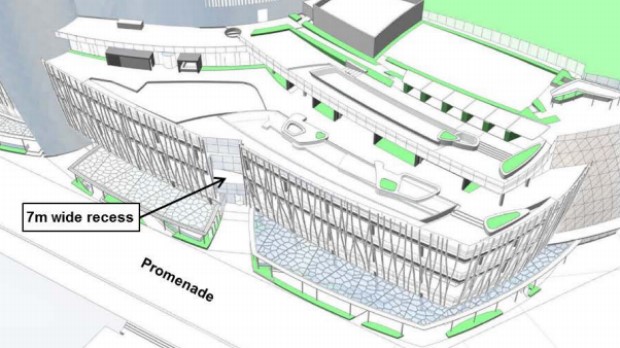There has been progress on a number of fronts in the big picture built environment space:
Coalition for NSW Planning Reform
This loose grouping of like-minded built environment organisations, including ourselves, PIA, AILA, the Property Council and the Sydney Business Chamber, first came together in August 2007 to lobby the then Labor government. We had several wins along the way, such as the delegation of major project assessments to the Planning Assessment Commission and the creation of the Housing Code and Joint Regional Planning Panels.
Our principal focus this time is to convince the Baird Government that the process of planning reform shouldn’t stop just because the O’Farrell Government failed to win the support of the Legislative Council to pass its new planning legislation two years ago.
There was broad community and industry acceptance of the White Paper reforms, specifically in areas such as strategic planning, community participation and infrastructure delivery. It was mainly in the area of development assessment that the major differences and contentions arose.
The coalition is therefore proposing that Minister Stokes moves quickly to implement these reforms while also laying the groundwork for the eventual re-introduction of the new planning bill.
Greater Sydney Commission
In last month’s message I welcomed the government’s announcement of the shape of the Greater Sydney Commission, while noting that design was absent from the scheme.
I have since written to the Department of Planning & Environment recommending four inter-related proposals:
Built Environment Committee
As the principal focus of the Commission’s work is the re-configuration of the built environment of the region I have recommended the creation of a built environment committee sitting alongside the Commission’s other committees to focus on this essential task.
Observer status for the Government Architect’s Office (GAO)
It is clear that the GAO will be adopting a more strategic role in the future, giving it the opportunity to provide advice on the achievement of design excellence across the government and public sector agencies. In my proposal it would share observer status with Infrastructure NSW and UrbanGrowth NSW.
Design for Sydney
I envisage Design for Sydney operating in a similar manner to Design for London within the local planning context, identifying opportunities to use major infrastructure projects to create new connections and public spaces, and advising on the implementation of major public benefit programs- such as the green grid strategy. It could be comprised of design experts in key government agencies.
Design review panel
The Commission’s Sydney Planning Panel will determine major developments currently assessed by the Sydney East and West Joint Regional Planning Panels. I therefore propose a design review panel to provide both strategic design advice and design advice on specific development proposals to the panel, following the procedures outlined in the SEPP 65 Apartment Design Guide. The panel should be chaired by the GAO, as is currently the process in South Australia.
Circular Quay
While we welcomed the Premier’s announcement of a major review of the Circular Quay wharves last month, he missed the opportunity to address the strategic renewal of the precinct as a whole.
Circular Quay fulfils a number of key roles in the city:
- Birthplace of modern Australia
- Road, rail and ferry transport hub
- Centre of a harbourside walk leading in the east to the Royal Botanic Garden and in the west to Walsh Bay and Barangaroo
- Link between our two greatest tourist attractions, the Rocks and the Sydney Opera House
- Leading retail, hospitality and restaurant district
To say Circular Quay is underwhelming in the way it presents itself in these major roles is an understatement. It’s not only the wharves that look tired. The whole precinct lacks a unifying idea. It’s full of visual clutter, particularly round the station, and it presents too many barriers to the enjoyment of a unique maritime experience.
Circular Quay could be one of the world’s great outdoor rooms, on a par with Piazza San Marco in Venice, London’s Trafalgar Square and the Place de la Concorde in Paris. Fixing it isn’t rocket science.
Key government agencies have been preparing a renewal plan for the last five years. We know what to do, we just need the political will to decide to do it.
Bays Precinct
The Institute has been an enthusiastic supporter of UrbanGrowth NSW’s approach to the re-imagining of this massive site west of the Pyrmont peninsula. They have gone out of their way to engage with the professions, the experts and the community in the run-up to the development of the eight sites in the precinct.
Now the first step in the development process has been taken. I attended a briefing last week in which three parcels of land including the White Bay power station have been offered for development proposals focusing on the adaptive reuse of the State Heritage structure into a technology hub adjacent to facilities for the health, education and creative industries.
I have severe misgivings about this announcement for the re-development of 10 hectares of waterfront land. Where is the master plan for this site – and how will it connect with the rest of the precinct? How will it integrate into the adjacent suburbs? Where is the commitment to fine grain and multiple players and many authors? How will public transport service this area? These are just a few of the questions I want answered.
Thank you.
Shaun Carter
NSW Chapter President

